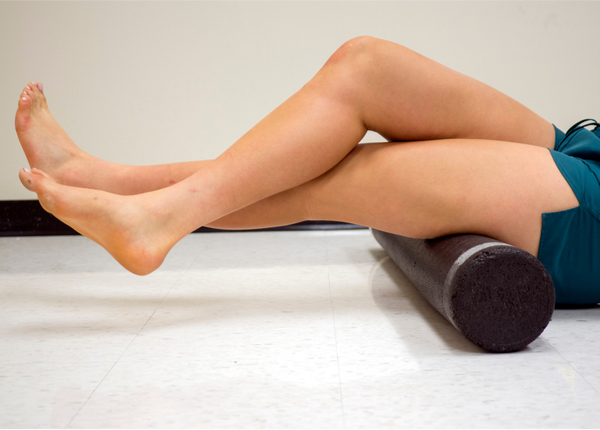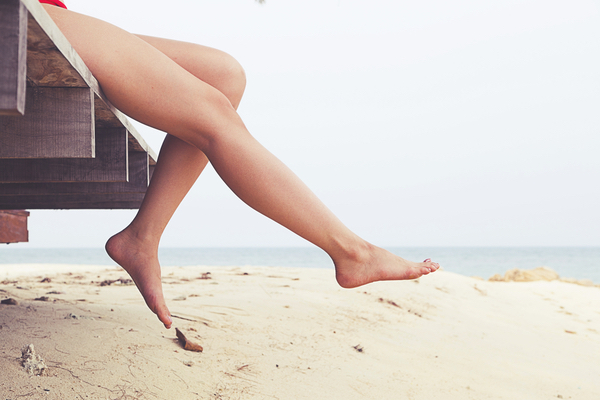If potions alone aren’t enough to smooth your pins, it’s time to go deeper, quite literally, and target your fascia for cellulite-free legs.
Cellulite isn’t harmful to your health but it can sometimes dent your confidence when it comes to baring all on the beach. The dimpled or ‘orange peel’ effect most commonly affects the skin on your thighs and buttocks.
And, if you suffer with cellulite hotspots, you’re not alone. Nine out of 10 women will experience it during their lifetime.
Focus on your fascia
One of the causes of cellulite could be down to what’s called your fascia. This is the fibrous tissue between your skin and the underlying structure of muscle and bone. It performs several functions in your body. These include reducing muscular friction, providing support and protection for nerves and blood vessels. Crucially when it comes to cellulite, it creates an environment for tissue repair.
‘The fascia is a dense band of connective tissue, which can be found almost everywhere in the body. It has a stringy, cobweb-like structure. It’s believed that cellulite is linked to an unhealthy fascia,’ explains Magdalena Ksiazek, head therapist at EF Medispa (efmedispa.com).
The ‘cottage cheese’ appearance is caused by fat under the epidermis protruding through weakened connective tissues. ‘This appears as sticky, clumpy or tight and can form distortions that may cause the pockets of fat to be raised, creating skin dimpling. However, there’s still not enough scientific information on this at the moment,’ she adds.
So what causes your fascia to be healthy or unhealthy? Genetics dictate the composition of your collagen fibres and fascia layer so even women with a low body fat percentage can have more cellulite than someone who’s overweight. Age can be a contributor too. ‘As you get older, your skin gets thinner, loses elasticity, becomes more dehydrated and collagen production slows down, which can make the appearance of cellulite worse,’ says Magdalena. And as oestrogen decreases in the run-up to menopause, blood flow to the connective tissue under the skin also decreases.
Smooth it out
Because cellulite is caused by fascial distortions below the skin, you can help repair and improve this layer, thereby reducing the dimpled look, with self-massage, body brushes, massage gloves and special myofascial tools. ‘Using a massager glove can help target the fascia layer to stimulate microcirculation,’ says Magdalena. ‘We recommend our clients use one alongside our Effusion Once A Day Body Smoothing Scrub (£54, effusionskin.com) and Twice A Day Active Cellulite Cream (£67) after a body sculpting treatment.
‘Drinking lots of water also flushes toxins out of your body and helps keep your skin hydrated,’ she adds. And if you’ve ever noticed that your cellulite has reduced after a holiday, it’s probably because you’ve been massaging in SPF and drinking more water – two factors that help diminish the dimple effect.
Manual ways to loosen fascia
 Try these DIY approaches for smoother pins. If in doubt, speak to a doctor if you have underlying skin or muscle conditions.
Try these DIY approaches for smoother pins. If in doubt, speak to a doctor if you have underlying skin or muscle conditions.
Foam rolling
Don’t neglect that foam roller hanging around on the gym mats. Using a foam roller regularly on cellulite zones can help break up and loosen fascia – this allows any fat deposits to lie flat under the skin but also plumps up the dermis so skin looks smoother.
Fascial kneading
Pummelling your knuckles onto your cellulite hotspots helps break down the fat deposits under the skin. You can do it while you’re watching TV. But avoid if you bruise like a peach!
Palpate rolling
This is a traditional massage technique involving ‘pinching’ a fold of the skin and rolling it between your fingers. This deep pressure technique will help release fat deposits in the fascia, but can feel quite painful.
Body brushing
Try to get intoa habit of dry body brushing twice a day to help stimulate your circulation and lymphatic drainage. Always ensure you’re using the body brush on dry skin and brush towards your heart. When targeting your lower body, brush towards your pelvic area.








